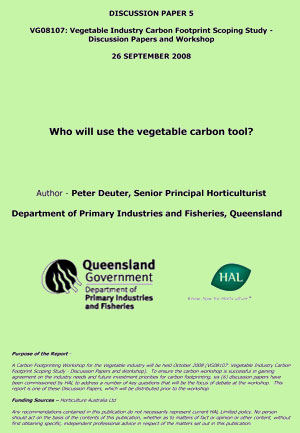|
|
This Discussion Paper is concerned with – “Who will use the vegetable carbon tool ?”. The question can only be properly answered after a better understanding of all the discussion papers is also available. This is because there are many “levels” at which a carbon footprint can be measured.
Summary : A Carbon Footprinting Workshop for the Vegetable industry was held late in 2008 where industry needs and future investment priorities for carbon footprinting were discussed. This paper was one of a series of six discussion papers that were commissioned by HAL, addressing key questions that were the focus of debate at the workshop. Understanding greenhouse gas (GHG) emissions from production systems, including supply and demand chains, is becoming an important issue for agriculture and for the horticultural industry. This is particularly the case as Government‟s concerns and actions in relation to climate change, including mitigation and emissions trading has significantly increased over the past 12 months. This has subsequently increased the interest by the community on the impacts of GHG emissions from all sources, including agriculture. It could therefore be expected that interest in the level of emissions from horticulture (and the vegetable industry), will increase. The question, “Who will use the vegetable carbon tool?” will only be properly answered after a better understanding of all the discussion papers is also available. This is because there are many “levels” at which a carbon footprint can be measured.
Companies using this methodology can display a carbon label on products, providing consumers with additional information to use in purchase decisions.
Acknowledgments : Funding was provided by Australian vegetable growers (through the R & D levy) and Horticulture Australia Limited. The Australian Government provides matched funding for all HAL’s R&D activities. |
||||
|

